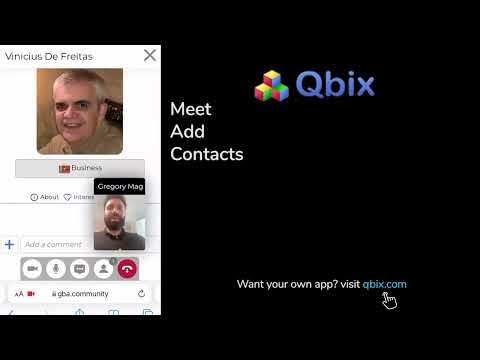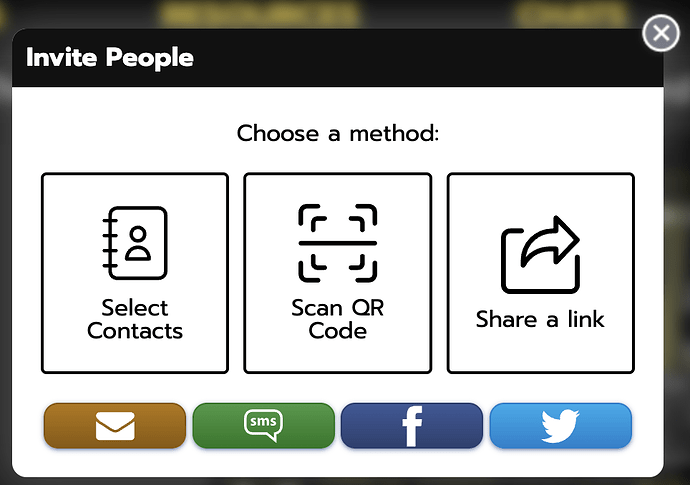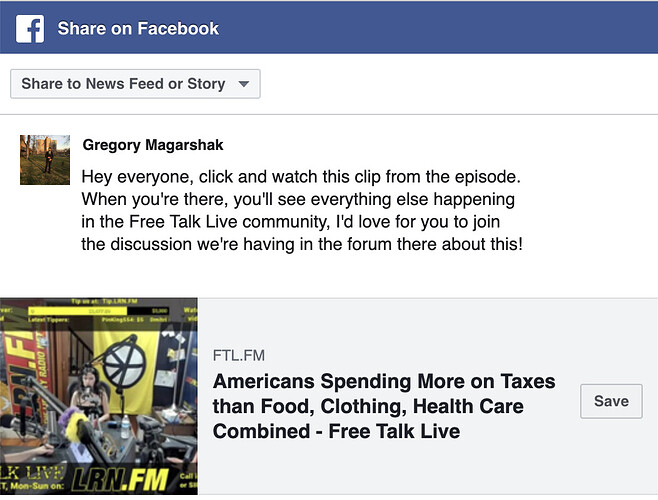Teleconferencing
Members of your community can start and join Teleconferences straight from your website, without the need for Zoom or Telegram. With Qbix powering your community, you can start directing users to your own website in order to attend online meetings, or even call into your show. Teleconferences are end-to-end encrypted, and can include, video, audio, and screensharing:
We are even working to support 3D avatars, generated through our partnership with Ready Player Me. These avatars allow users to always look their best, and help prevent NSFW content in both videoconferencing and uploaded photos representing users. Thus, a community can feel confident at least in the visual content during teleconferences and calls:
Teleconferences work on iOS and Android phones, as well. Unlike Zoom and Telegram, they take place right on your website, so participants can continue to interact with the rest of the site.
Use Cases
Hosting teleconferences and videos on your own site means you won’t be paying to send traffic to YouTube and Discord, your users won’t be distracted away to other publishers’ videos, but stay and engage with your own community. It’s also much harder to get deplatformed, since you can always simply move the site to another host.
Personal Calls Community members can start video/audio calls right from your website. Most of the time, people wouldn’t allow others to simply ring them up at any time, since that could be very distracting. Instead, they can indicate their availability in various time slots during which one or more people can reserve to connect with them. They’ll be able to integrate this with their preferred calendar.
Breakout Rooms You can have people alternate between viewing videos of panels and lectures from the main stage, and joining smaller interactive rooms for group projects, study sessions, or 1-on-1 speed dating meetings. This can all take place as part of an organized program of events.
Office Hours Instructors can set up times when they can help people get things done, by teleconferencing over Zoom, Telegram or right on the website. They can charge for their time, per minute or per session. They can also offer group discounts if more people come at the same time.
Shows and Panels Hosts with an audience can schedule online teleconferences and invite panelists and guests on their show. They can also collaborate with other hosts to joint events and panels that each host can livestream to their own respective audience. Thus, two fanbases can come on one site to a live discussion or a debate between two or more famous hosts. Hosts can take live calls on-air, or read questions submitted by audience members.
Media Channels During the event, the teleconference can be livestreamed to Facebook, YouTube, Twitch and other platforms. After the event, it can be saved into episodes powered by the Media plugin. Community members can extract small clips that they can then share on social media. All links are tracked so people can earn credits for inviting new listeners to the show:
Limits on Microphones and Cameras
People who are actively participating in a Teleconference are all connected peer-to-peer, so for example 5 participants would result in 4 streams per participant, for a total of 20 streams. This can get quite intense when there are too many participants. On Zoom and Microsoft Teams, this ends up looking as follows:
We consider it to be mostly a gimmick and a distraction to see so many people at once. In fact, if everyone spoke at once, it would sound like a cacophony. Instead, it’s better to have an orderly arrangement where only 1-3 people can hold a microphone at once. This is accomplished by the “Limits” feature.
Every app can have default limits for how many people can speak at once. Whoever is speaking at the moment is represented by their video stream (if they turned on their camera) or by an avatar with an audio visualization (if they didn’t). If a participant who doesn’t have a microphone wants to start speaking, they can request a microphone, starting a 10 second countdown that lets everyone else finish their thought. During this time, someone can volunteer to give up their microphone, otherwise at the end of the countdown, it is grabbed from the person who had it the longest. There is also a minimum amount of time that someone gets to keep a microphone, so they can make a complete thought.
The Limits feature is also good for promoting orderly debates, and ensuring that each party has an equal amount of total time to make their points.
Livestreaming
As we just discussed, only a few people would be talking “on stage” at once, such as in a debate or on a panel. The rest of the people would be listening to a livestream.
Qbix supports livestreaming to YouTube, Twitch, Facebook, or any other RMTP endpoint, just like professional broadcasting software but allowing multiple people to record it at once. It comes with a livestream editor, that allows you to set up “scenes”, set backgrounds and branded watermarks, and play custom sounds during the livestream. The editor even works on mobile phones, so you can “go live” from a mobile phone.
Each participant in the Teleconference can start their own livestream, and even move from room to room, having their audience follow them from room to room like a reporter who approaches various groups of people and interviews them. This kind of set-up allows for massive events to take place with thousands of participants, and each participant can go from room to room, and livestream their experience. It’s also very libertarian and decentralized, as multiple participants in a Teleconference can livestream what they want to their own audience, and if they are “kicked out” of a room, they can enter other rooms or invite people to their own room to continue the broadcast.
Peer-to-Peer Broadcast
Qbix Platform aims to help people around the world host their own communities, without having to rely on Big Tech platforms like YouTube and Facebook. We’ve even built our own peer-to-peer broadcast option for teleconferencing, which you can use instead of, or in addition to, the other livestreaming options.
With Peer-to-Peer Broadcast powered by Qbix, the broadcaster agrees to send their livestream to a small number of other peers. In turn, each of those peers agrees to send it to a certain number of peers, and so on, forming a tree. Each peer in the tree can choose how many peers they prefer to support, based on their bandwidth capabilities. Each new peer who joins the broadcast is given a few peers they could connect to, and receive the broadcast with a delay. The further down in the tree someone is, the bigger the delay. Peers who are “about to be invited on stage” may be hoisted further up in the tree, to get the livestream with the minimal delay. When they are “brought up to speak”, they join the Teleconference and their stream is now sent to its participants, including the participants livestreaming the Teleconference.
Credits can be charged for every minute that someone is participating in a livestreamed broadcast, or for office hours with a famous person, etc.
Waiting Rooms
The Streams/livestream tool can be placed on any page, allowing users to view a livestream from YouTube, Twitch, or Qbix’s unique Peer to Peer Broadcasting feature.
Below the livestream is a Streams/chat tool, which allows people to see what the hosts are typing. They can type a question, which creates a related private chatroom that only the hosts can see during the broadcast. They can enter it and correspond with this person.
Also, audience members are able to initiate a call, which creates a waiting room related to the current livestream. The participants in the Teleconference being livestreamed can see the waiting room and the topic the audience member has typed. One of the hosts, or a staff member, can enter the waiting room and interview the person. If they wish, they can pull them “onstage” into the livestreamed teleconference.
Call Centers
The waiting rooms feature isn’t only useful for people before bringing them to a live show. One can build an entire call center, for example to handle people calling in to receive support on a specific topic. Front-line agents around the world can see the incoming calls, enter them, and route them to the right person who can help. Or they might schedule office hours with an expert in that specific subject, thus providing a sort of layer of gatekeepers, for determining who should be directed to which expert. And of course, all of this can be integrated with Credits, to properly compensate everyone for their time.







